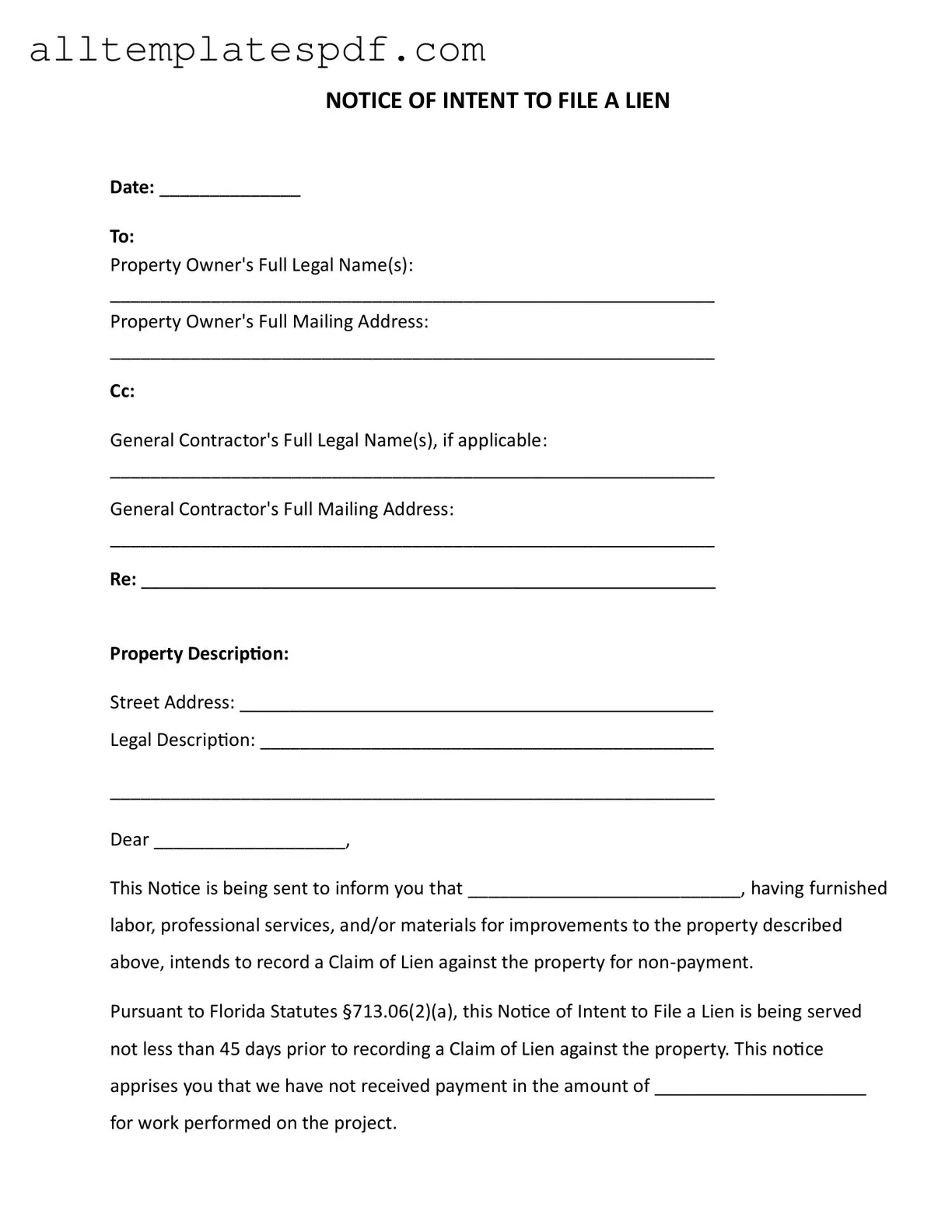Fill Out a Valid Intent To Lien Florida Form
The Intent to Lien Florida form is a legal document that notifies property owners of an impending lien due to non-payment for services or materials provided. This notice serves as a crucial step for contractors and suppliers, informing the property owner that they have 45 days to address the payment issue before a lien is formally recorded. To ensure you handle this matter promptly, fill out the form by clicking the button below.
Open Editor
